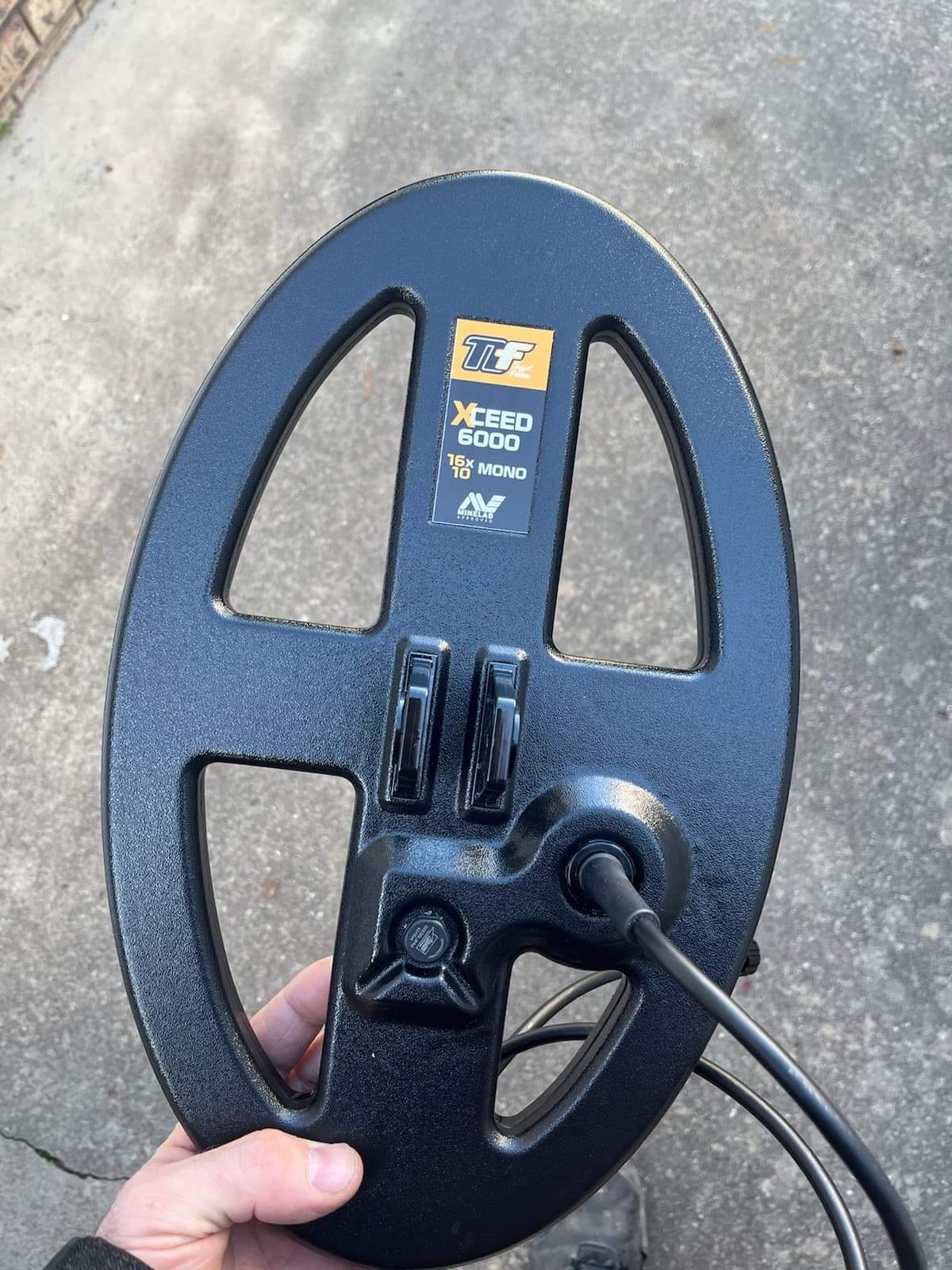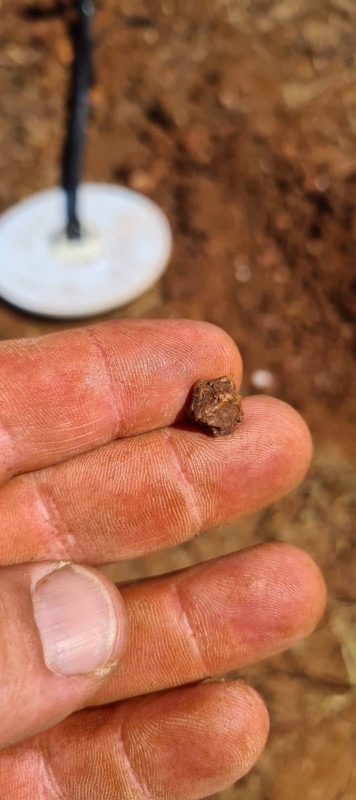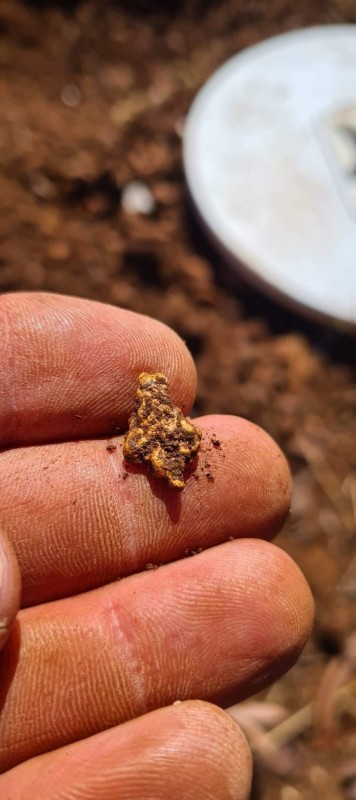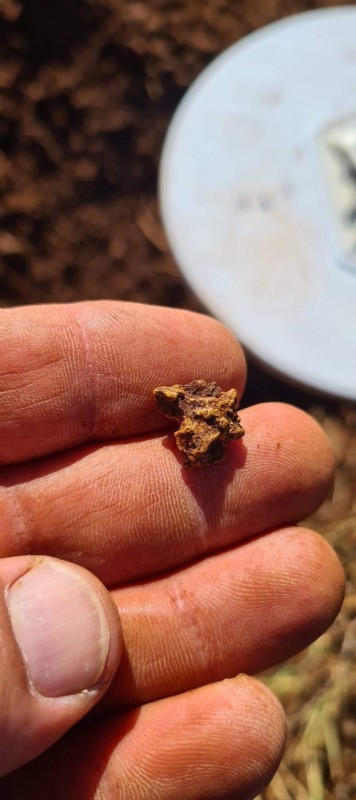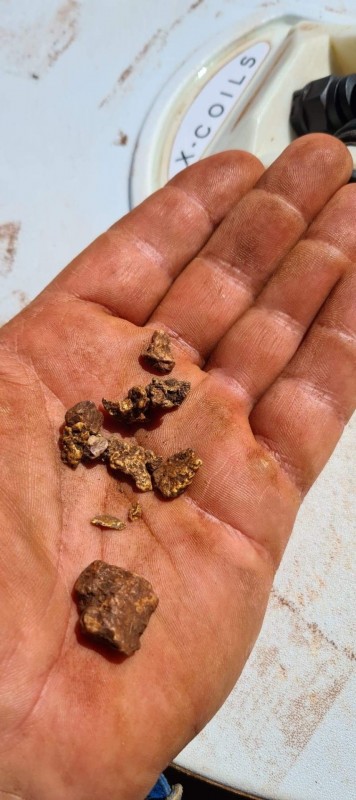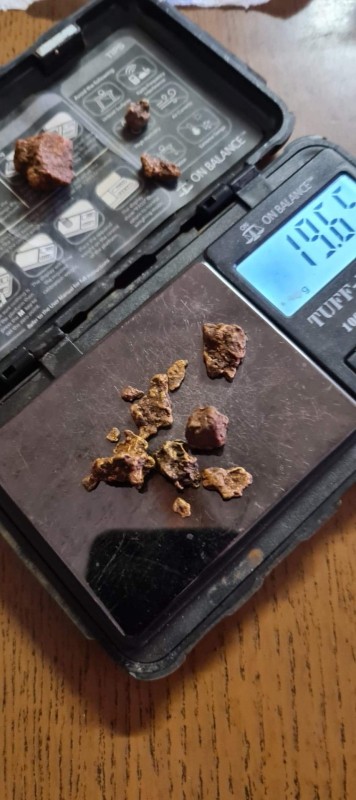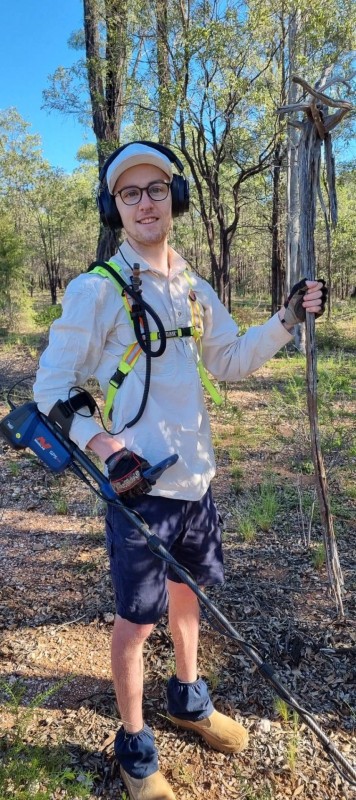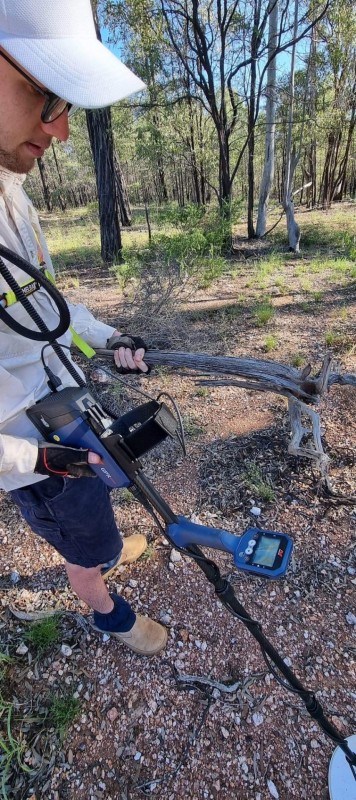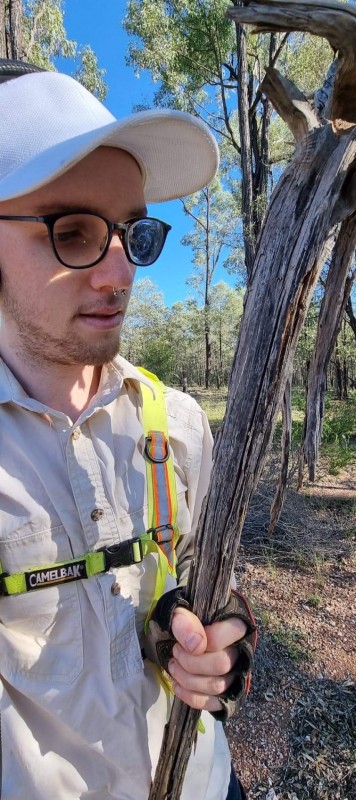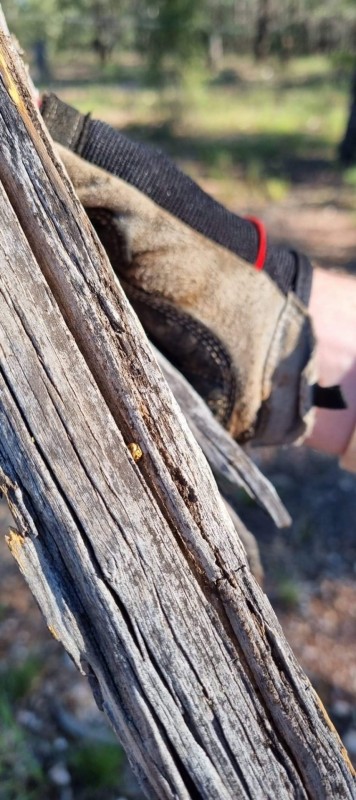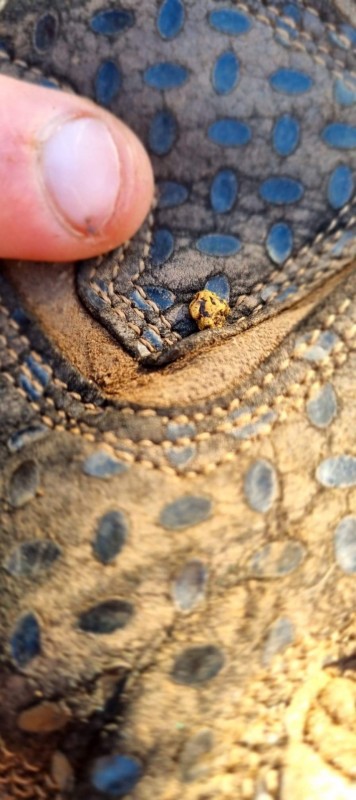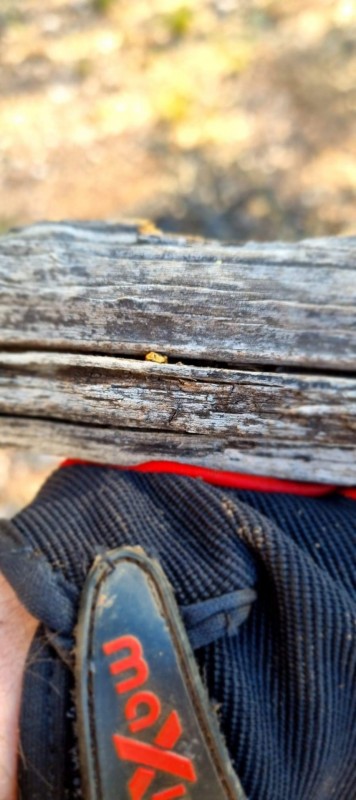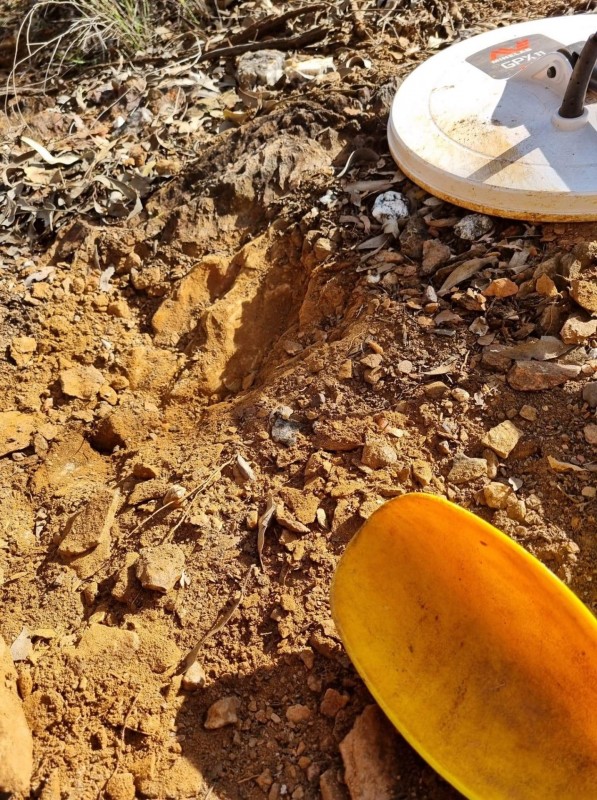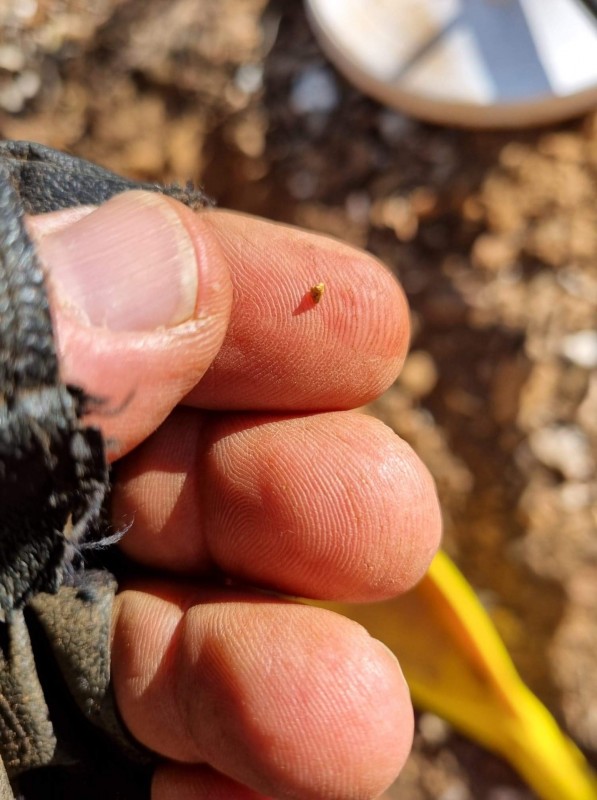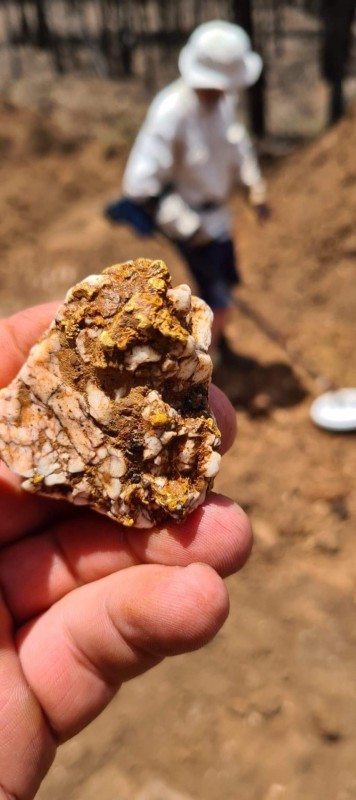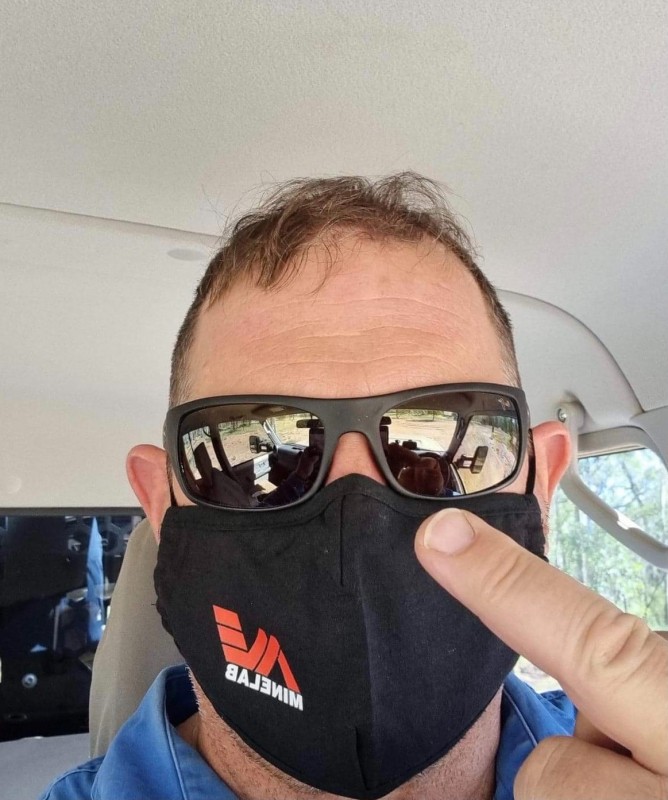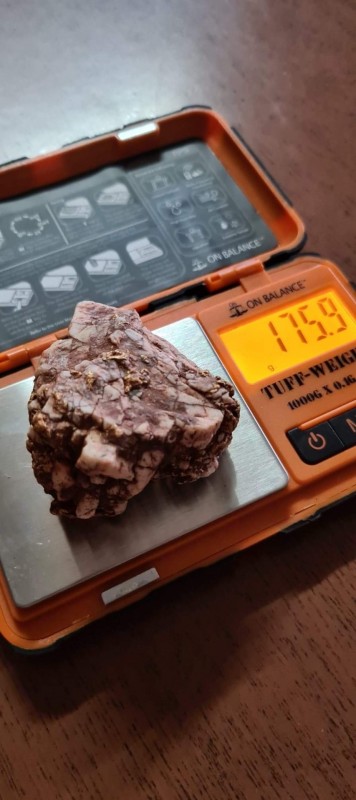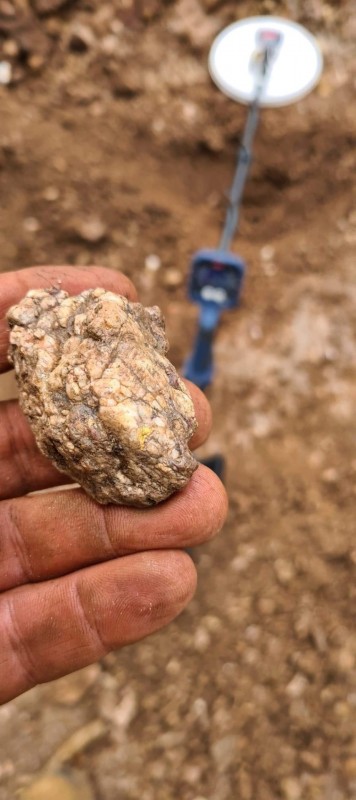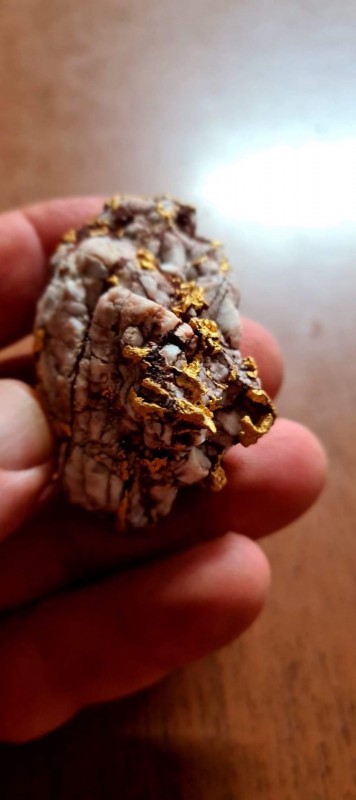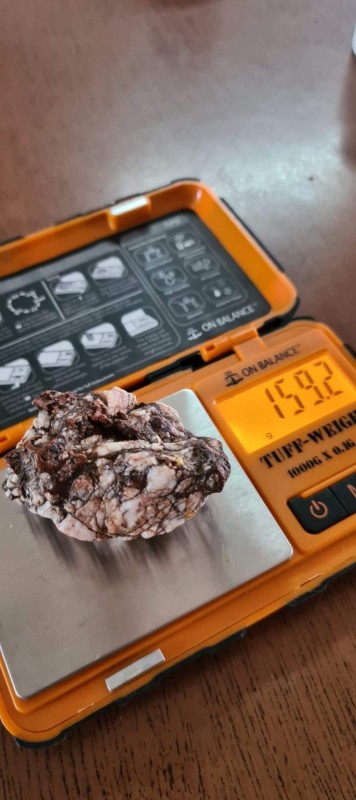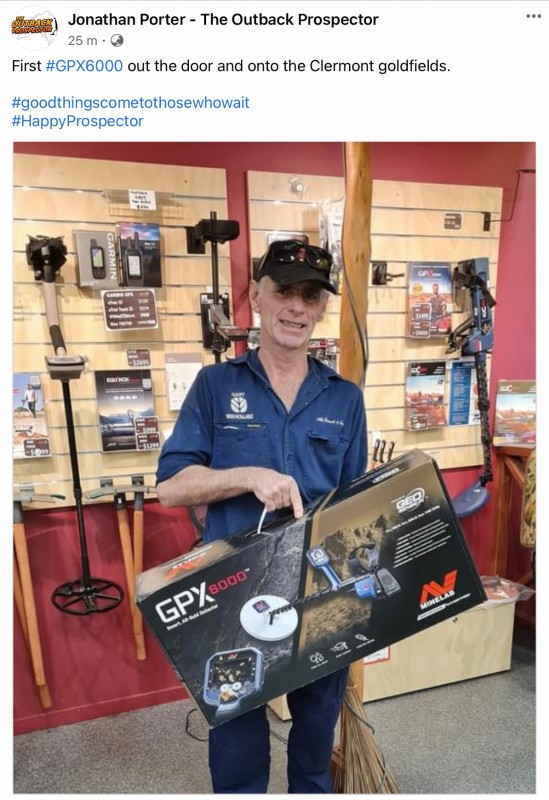-
Posts
1,084 -
Joined
-
Last visited
-
Days Won
35
Content Type
Forums
Detector Prospector Home
Detector Database
Downloads
Everything posted by Jonathan Porter
-
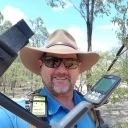
How To Find The Best Gold Detector
Jonathan Porter replied to Steve Herschbach's topic in Detector Prospector Forum
I often find people on impulse buy the detector then they struggle then they finally do some actual research and look for someone who knows what they are doing and approach them for help. This happens to me constantly and I ended up training all the city dealers customers for them, one dealer actually rang us and asked about our training rate and a few weeks later a guy rocked up unannounced with a brand new GPZ7000 in the box claiming he was here for his training session!! 🤬 I wore myself out the first three years of opening our shop and now will only train OUR customers who purchase from OUR store (comes free with the GPZ 7000). I would much rather go out detecting and can actually make more money doing so than setting up a full time training business, this is mainly due to my actually putting effort into the customer one on one, some people take longer than others and I could not just leave them when the allotted time was up. Apparently I am also known as the “Angry Prospector” 😂 because I get a bit short with people who refuse to listen or worse won’t shut up!! I am not there to make friends I have a small window of time to try and get across the interaction between motion, sight and sound, settings are pretty simple with detectors these days but actually swinging the detector and combining those senses to massage a target signal out of the ground is the hardest part, trying to demonstrate this when someone is talking incessantly and not paying attention is maddening and nigh on impossible. No matter which detector you buy be honest with yourself about your level of commitment, no amount of training will help if you’re not committed to learning. Trying to sort the wheat from the chaff can be a little daunting when you are doing your research but like Steve said look for the reputable consistently successful people in the area you wish to explore. JP -

Reg Wilson & Jp GPX 6000 Commentary & Tips
Jonathan Porter replied to Reg Wilson's topic in Detector Prospector Forum
Adendum: One thing I should mention here that goes in the 6000’s favour with regards to outright depth when comparing the GPX 5000 to the GPX 6000. The 6000 uses much more modern electronics as such it is less prone to Sferic noise so theoretically it should achieve better outright depth than its predecessor, this is because the Stabiliser function is allowed to be opened up a lot more on the 6000 (part and parcel of GeoSense). The other reality is Monoloop coils will produce a more defined deep target signal which can be more obvious compared to the more subtle broad signal response generated by DOD coils. So in reality the 6000 in hobbyists hands is a better fit for the vast majority of detector operators looking for ease of use thanks to lightness of weight and simplicity in both the user controls and target signals. JP -

Reg Wilson & Jp GPX 6000 Commentary & Tips
Jonathan Porter replied to Reg Wilson's topic in Detector Prospector Forum
Hope you don’t mind me stepping in here to offer an opinion? 🧐 Hark you’re mind back to when the GPZ7000 was released, at the time the GPX5000 was the top dog for gold detecting which the 7000 then pushed out of the way. Over time the vast majority of 7000 owners have taken advantage of the better depth capability on ‘fast time constant’ targets rather than the outright depth advantage on large gold the tech has on offer. This is largely due to the gold fields just not having the right conditions for many large nuggets still being left in the ground at depth thanks to the inverse square law. As an example a large nugget at 3 feet detectable by the 5000 and the 7000 does not need to go much deeper for the 5000 to sign off but alas thanks to the inverse square law there’s not a lot more depth required for the 7000 to sign off as well. 😞 Once nuggets get beyond a certain range from the coil it becomes a highly specialised operator to be able to take advantage of it. Therefore the vast majority of GPZ owners spend a very large proportion of their time chasing the more friable ‘fast time constant’ gold that is still well within range that is missed by switching field-collapsing PI machines. Add in the weight factor of the 7000 and it soon starts to become a more specialised machine that requires a lot of effort from the operator. In reality the 6000 is on the same performance curve as the GPX5000 when it comes to large gold at depth although at present there are only a few coils available if you want to go head to head. Where the 6000 does shine, and very brightly at that, is ergonomics and fast time constant sensitivity. I see no real need to focus on the 6000 outright depth capability on large gold because we have the 7000 for that plus there have been plenty of 5000’s with a variety of coil sizes go over the goldfields in the past even to present day. It is however good to know when you are using the 6000 for what it was intended for it will let you know if a decent piece is lurking, not as good as a 7000 but still just as good as the 5K. Just my 0.2 cents JP -

Reg Wilson & Jp GPX 6000 Commentary & Tips
Jonathan Porter replied to Reg Wilson's topic in Detector Prospector Forum
Welcome back Reg you rascal. 😀 My post from Finders for forum readers: What’s there to say about the 6000? Not a lot really 🧐 It’s been designed to be used by just about anyone, so my advice is to just switch it on and go detecting. 😝 Use the Velcro cable ties, one with a nice coil lead loop near the coil (just above the point where the coil edge touches the shaft when laid flat) and the other Velcro between the upper lock knuckle and the handle to prevent cable movement near the connector. Leave a little looseness in the cable between the two, too tight and there will be noise created by stiction on the lead when the shaft flexes. I do not recommend using the inbuilt speaker but I say that about every gold detector with a speaker as I am not a fan of the audio source moving around, plus I hate the 6000 speaker with a passion because it is Shyte. Do not use the Quest Tx device or any BT Tx near the control box, the 6000 is super sensitive to electronic devices being anywhere near the control box, mobile phones included (especially when phone signal is weak). Do NOT be tempted to drive too much audio volume to achieve target sensitivity, I strongly suggest starting with the Volume low and gradually increase it as it is easier to adjust your brain that way rather than the other way around. It is much better to run a low volume and increase the sensitivity (I start at full Manual mode and adjust back from there). The BT headphones have a lot of volume range so it’s a bit of juggle to get the volumes correct between unit and headphones. Start at 2 on the control box and halfway on the headphones. If your right handed put the volume control side of the headphones on your right ear and opposite for lefties. This cuts way down on dropped audio packets. The 6000 takes a while to stabilise from a cold start so boot it up and leave it running for a bit while you gear up, you will notice the threshold is extremely dominant and target sensitivity is drowned out. When I see someone on YouTube turning on a 6000 and immediately waving over a target I just shake my head. You will also notice the threshold takes a while to stabilise after performing an auto tune so give it a few seconds to stabilise before checking suspect targets etc. In extremely saturable ground the 6000 has two ground balance heights, one is a general height at usual detect height levels in most ground types but in extremely saturable HOT ground there is a 40mm to ground GB that requires a bit more care, slow careful pumping of the coil in this zone will allow for careful close to ground detecting in extremely variable ground. A good operator from the VLF era will soon work out you need to be on the Quick-Trak button on a regular basis, the 6000 is extremely sensitive as such it will express audio responses over variable ground that the auto GB will not keep up with, GOOD operators understand this intuitively and keep on the QT button as par for course. Do not get sloppy with the QT process, take your time and move the coil in a measured and controlled way, the days of a quick pump and walk in hot ground have long gone, that’s the price we pay for the incredible sensitivity of the GPX 6000 platform. Adhere to these precepts and you will soon discover the 6000 is nigh on as sensitive to small gold as a high frequency VLF (I kid you not, I personally do not chase the fly-chit stuff but you can easily find ‘wet your finger to pick up gold’ with this detector). The shaft needs to be firmly held to prevent twisting below the lock knuckle when tightening, so hold the shaft ABOVE the knuckle your turning with one hand and tighten with the other till it is firm, repeat the process on the lower one. I leave mine loose enough that I can place my foot on the coil and apply a firm twisting pressure to align the coil with the control box. If you find it is twisting out of alignment during detecting or when lifting the coil while you scrape at a suspect target with your boot then just tighten the offending knuckle using the above described method. In Quiet ground Auto+ has the ability to achieve more sensitivity than the manual modes, by default the Auto modes are threshold off so you need to long press the Ground Type button for 2.5 seconds to get threshold. (this will revert to threshold OFF on a power cycle BTW). Small target sensitivity comes from the Difficult mode, so in Normal the timing is a blend of Normal and Difficult. If the gold is primarily tiny then there will be little difference between Normal and Difficult so do-not unnecessarily put up with ground noise using Normal in the hopes of achieving more sensitivity on tiny gold. There is also no need to re-ground balance when going from one timing to the other as both timings are ground balanced in the background regardless of the timing selected (Thanks to GeoSense) 😊 JP -

Later Rather Than Sooner On The 6000?
Jonathan Porter replied to mn90403's topic in Detector Prospector Forum
I don't know which is worse, having had ‘some’ stock and satisfying ‘some’ customers or not having ‘any’ stock and just having to be patient with a lot of dissatisfied roaming customers. 😢 I am daily seeing customers who “I have worked hard for” going elsewhere because we cannot supply, of course I know other dealers are suffering the same issues but this kind of thing really does your head in from a business POV! 😞 I really feel for the ML sales guys here in OZ they are being asked the same question over an over again with no ready answers to give till the stock (if any) arrives at the airport!! 🤕 Imagine trying to plan the manufacturing and release dates for all this? Kinda of like having a crystal ball with a towel over it, it’s more or less totally down to guess work with all the world event variables going against them at every turn. How do you make a science out of pure guess work? 🤔 JP -

6000 Vs Z7000 With X-coils Combo
Jonathan Porter replied to Elijah's topic in Minelab Metal Detectors
Anyone using the inbuilt speaker doing a comparative video, especially using a phone or Go-Pro as the camera is just asking for trouble with the GPX 6000, so watchers should take any such video with a grain of salt.🤨 You would be VERY surprised how much EMI or unstable threshold KILLS performance especially on a HIGHLY sensitive detector like the 6000, so to me the comparison videos are not even relevant compared to actually using the 6000 properly/seriously. Yes we can call the instability with the speaker a design flaw if you like (BTW it has nothing to do with what coil is attached), I personally could give a rats arse, it is what it is!! 🥱 It’s common knowledge now so keep using the speaker if you must.🥴 The 11” skid plate cover is built nearly as tough as the SDC covers so someone wearing through one already is basically abusing their detector AFAIC!!🤯 X coil skid plates will last a 10th of the time if treated the same!! 😬 In all the testing I’ve done I’ve had ZERO issues with the shafts and knuckle joints!! They are by far the most durable and light weight shafts I have ever used!! Anyone complaining about the lack of Threshold adjustment, Threshold Pitch adjustment or lack of discrimination should instead just go use a GPX 5000 or GPZ7000. Lastly the DD is designed for Salty ground or High EMI areas, use it for it’s intended purpose and see how deep other detectors or coils compare in the same environment!! It’s all relevant to the location and a no-brainer surely? 🤔 🤨. The GPX 6000 with DD coil poops all over the 7000 in high EMI areas or Salty ground types. JP -

6000 Vs Z7000 With X-coils Combo
Jonathan Porter replied to Elijah's topic in Minelab Metal Detectors
Every time a new detector comes out this ‘comparison syndrome’ comes to the fore as everyone clamours for information and impatiently waits for access to stock or more feedback from their trusted sources. Those of US in the know have a few choices in situations like this but both of them are frustrating to the extreme (talk it up or shut up 😞). As more people join the ranks of those of us in the KNOW things will start to settle down but this usually takes a year or more and in some cases such as the 7000 there are actual hot beds of communities where deniers still say the GPX5000 is better than the 7000 or can hold its own performance wise against the 7000 😳. I personally know statements like this are a crock of Horseschist but trying to have a discussion with this type of wall-eyed mindset is pointless, hence why you do not see me posting on here much since the 6000 release. 🤕 Firstly the 6000 (as good as it is) is not my detector of choice because in the areas I choose to detect performance is king, so I choose outright depth performance over the amazing performance of the GPX6000. This might sound incredibly smug but I actually get bored with the 6000, IMHO it is just plain too easy to go out and get a piece of gold with it. There is a very GOOD reason why you see Steve Herschbach actually getting excited over this detector, I for one am thrilled to see such passion in both him and his small group of trusted friends who he has invited to try his detector out. 😊 Steve is excited because his USA detecting areas are PERFECT for the GPX6000 and so are a lot of other areas around the globe. You target the right areas and the 6000 will light up like a Christmas tree doused in petrol with a struck match thrown at it. 😂 I have hundreds of locations around Australia that are played out for the GPZ, literally hundreds even thousands that just do not have the depth to justify the performance of the 7000 even with an X coil attached.😲 These locations still have gold in them, so do I just put my head in a bucket of sand and pretend the gold isn’t there or do I grab the 6000 and go get my share before someone else does? Because at the end of the day that is exactly what has been playing out since the first detector hit our shores back in the 70’s. In my particular circumstances gold has a significant impact on my income, combine that with my 33 years of detecting experience and access to still largely virgin areas, where larger deeper gold or variable ground conditions require the use of ZVT then of course I will still be using the GPZ 7000 as my mainstay detector......UNLESS conditions require the use of the 6000 such as salt ground or EMI or stupidly huge amounts of sub gram gold liberally scattered about, and yes I do know such places that are well out of the way and will one day in the hopefully very near future be revisited by me. So here is my take on the GPZ7000 versus GPX6000 debate, GET or have BOTH, they both have relevance, they both are unique and they both do their thing that the other just can’t do with a liberal cross over in the middle for those times you cannot decide which one to swing or when you realise you just cannot swing BOTH at once!! 🙄 😂 If you cannot decide which one to go for go for the GPX6000 because those of you in the KNOW should already have the experience to KNOW what the 7000 can do that nothing else can.😠 If you do not find gold regularly with the GPZ 7000 then you absolutely should stop dithering about and get a 6000. 😜 To THOSE of you who do not trust the WORD of very experienced and well respected people on this forum you should just sit on the fence and be quiet till someone you do trust comes along and tells you exactly what has already been said here. 🧐 🤔 “A wise old owl sat in a tree, the more he heard the less he spoke, the less he spoke the more he heard, why can’t we ALL be like that wise old bird” -

GPX 6000 Magic Marketing Words
Jonathan Porter replied to mn90403's topic in Detector Prospector Forum
Yes let’s 😊, the less 7000’s that are out there the better then there’s less competition for me. 😝 But seriously the 6000 is a no-brainer, the weight factor alone justifies itself then the ease of use on all sorts of ground types combined with extremely good performance make for a pretty unbeatable combination in the majority of people’s hands. Probabaly the only negative is the detector expresses itself very freely and can be a little unforgiving in a new chums hands, poor coil control in harsher ground types will punish the operator who is unskilled in the types of actions that can exacerbate a highly sensitive detector. The 7000 thanks to its Super D coil whispers over the same ground types, whereas the Mono on the 6000 requires a bit more control. So even though the controls are simple training should still be offered, and taken up, on how to swing the detector and understand what its behaviours are. JP -

Norvics 6000 Initial Impression
Jonathan Porter replied to Norvic's topic in Detector Prospector Forum
Anyone read a series of books by Julian May titled saga of the torque’s? These neck thingies look very much akin to what the books were about, I wonder if it will give GPX6000 users any special powers? 😊 I want a gold one. 😂 JP -

Norvics 6000 Initial Impression
Jonathan Porter replied to Norvic's topic in Detector Prospector Forum
I use both depending on the weather, during testing I used wired headphones a lot for continuity when making calls on audio ect (full BT operation did not happen till much later in the build/development cycle), but personally prefer a speaker for our climate. I now use the Avantree Rx APTX BT unit just like a WM12 dongle, they come supplied with a lead with a 3.5 mm plug each end and I just add a 6.35 mm adapter to go to the booster input socket. Currently I’ve just been putting the booster in my shirt pocket along with the BT Rx unit and then out to a single GME speaker in my other pocket or clipped to the cross over chest strap if I’m wearing my camelback. IMHO there is really no need for two speakers, the audio on the 6000 is pretty powerful as is so a single speaker in the middle of your chest is more than sufficient. There is a blend of volume required to get the audio sounding nice and crisp, usually this requires the 6000 volume to be about 2 or 3 then adjust the booster volume to a level where you can easily hear the threshold, I then run the coil over a small surface target and confirm its not overloading and back off a touch from there if required. This method also works really well with Zero threshold when in the Auto+ mode. I tend to use Steves insane settings methodology when using Auto+ with Zero threshold and crank the volumes to bang on the tiniest of bits, the threshold breaks pretty regularly and becomes a pseudo threshold but wow does it smash those tiny targets, a really brilliant method in saturable twitchy ground that unsettles the 6000. You need to keep on the Quick-Trak button often in this mode, balancing regularly, an OCD approach to forcing the GB is highly recommended. 😝 Note: DO NOT USE the Tx module anywhere near the control box of the 6000, insanity will result through the cursed EMI!! JP -

Norvics 6000 Initial Impression
Jonathan Porter replied to Norvic's topic in Detector Prospector Forum
I can assure all forum readers it is much more stable to use the GPX6000 with the headphones wired or wireless or use a wireless speaker arrangement rather than use the inbuilt speaker. JP -

Norvics 6000 Initial Impression
Jonathan Porter replied to Norvic's topic in Detector Prospector Forum
Glad you like the little blue beastie Norvic. 😃 Couple of things about the 6000, one is it is a little more prone to EMI especially if you tilt the coil out of level plane, this is because the timings are a really wide bandwidth. Obviously in the terrain your working titling the coil is the go-to mode so like the 5000 up in your country you just need to learn to live with it. Secondly I am not a fan of the inbuilt speaker so advise serious operators to look into a low latency Bluetooth receiver arrangement and go wireless. Avantree low latency APTX receiver I have tested the Avantree unit and it performs extremely well on the 6000, you can then go from the receiver to a booster like the B&Z or Steelphase then out to a single or dual speaker or just plug in your favourite headphones like the wired Bose Noise Cancelling buds (most Bose BT buds are not APTX BTW). Basically you treat the Receiver unit like the WM12 for the GPZ. The 6000 also takes a little while to settle down after turn-on and performing its noise cancel so be patient as the threshold starts to settle, you will notice the threshold sounds extremely dominant after first turning on and there will be a fair few spurious false signals as you sweep the coil. After a noise cancel the threshold will also sound very dominant then slowly settle down. My usual method is to turn the unit on with the coil 100mm up and held flat and let the detector stabilise then I go and lean it against a tree as I get my gear organised this way it’s slowly settling down/warming up as you prepare. When I’m ready to go detecting I’ll check the threshold with the coil held flat and maybe perform another noise cancel if its a little unstable then walk off as it settles down. Hope this helps JP -
I’ve been told a Zsearch order is headed its way UpYonder 😊 which means not much stock to be had in Aussieland for a while. 😞 Pretty frustrating being a dealer in Australia at the moment, it’s the start of our detecting season and the two main hot items of choice, GPX 6000 and Nugget Finder Zsearch, are in constant backorder with a few dribbling through here and there, losing sales is the order of the day as customers scramble all over the country doing the ring around trying to get their hands on product before they head off on their prospecting adventures. It makes it hard to plan your advertising and maintain or develop relationships with your customers to have it all thrown away due to an inability to supply, customers just will not wait if they can source the thing they want clear across the other-side of the country. 😣 The only saving grace is every dealer has exactly the same problem so we all suffer together 😆
-
Looks like everyone has had their say now so hopefully this X coil thread can continue on in a positive direction moving forward. 😇 It seems to me two important things have happened in parallel, one was the major shake up with all the different entities and the other is the release of the Concentric coils. Both have had a profound effect on the situation and the many discussions around the subject. 🧐 The entities thing is less meaningful now than it was a month ago and will probably continue that way as all the friction points have been largely removed. My friction points were multi faceted and have been discussed ad nauseam, so with the personal character stuff now put aside I would like to examine the BIG changes in the form of the new Concentric X coils, because they really are a game changer especially when considering my concerns based around Ferrite balancing etc. From my perspective I REALLY have changed my opinion of X coils, Rick (Araratgold) first brought to my attention the differences in the new CC coils but at first I was a bit skeptical based on experiences with Concentric’s back in the early ZVT prototype days, but I was willing to listen because he has my respect. I will admit though I was a very skeptical because Rick had not complained about the spiral wound DOD Coils even without ferrite balancing, I’d say most likely due to the ground types he works. This is not in any way a criticism of the way he detects or the ground he works, (Australia is made up of a lot of different extremely diverse ground types) I was thinking the CC coils might behave similar over the ground to the Spiral DOD’s which in the ground I work would be problematic. The video he put up of his 17” CC coil in action really made me sit up and take notice Meerkat style 😝 and also made me realise I might have to ‘Eat Crow” due to my cautionary comments when they were first announced, so fair enough I stand corrected because when I received a 17” I too was very surprised by how well they behaved. All three CC X coils I’ve used ferrite balance well, not perfectly but more than adequate where the ground signal is far greater than the tiny bit of residual X signal I’m hearing on the ferrite, so its a big TICK ✅ from me on that score ( X signal was always a major pinch point for me). Secondly there is minimal saturation signal (unless the ground is really bad), amazingly even less than the GPZ14 so another BIG tick ✅ from me on that as well. Next was touch sensitivity and even in General Difficult I was impressed, it was easily as good as the GPZ19 and GPZ14 coils. Amazingly the bit that really surprise was salt signal, that really came out of left field and I can only put it down to a few things but I need to ponder on it some more. 🤔 So there you go, I’m eating some of my words, the latest Concentric X coils get my tick of approval on many fronts, they have very good sensitivity on even the tiniest of stuff at quite surprising depths. I have not dug anything amazingly deep yet or on the larger side of the scale with a 5 gram piece at 14 inches being the biggest so far, but all in all they have definitely improved a lot, to the point where there is probably no longer any need for the DOD spiral wound coils (unless they have improved a lot since I last used them as well). So is this a plug for X coils? No its just me being honest about what I’m experiencing and also owning my previous publicly expressed negativity. Do I sell X coils? NO I do not, if you want an X coil go to the web site and order one. JP Gold found on the first session with the 17” Concentric X coil in extremely variable ground
- 48 replies
-
- 14
-

-

-

-

-
Steve a good post and a golden opportunity for everyone to put a line under the whole sorry mess and move on into sensible discussion. No one will truly know EXACTLY what happened behind the scenes because the main combatants have largely gone away for a myriad of reasons with the main incentive being marketing and sales. I for one am not proud of my involvement because of the harm to those who do not know the whole story, that’s the price others are having to pay because of my stupid stubborn sense of injustice. I’ll own my part in the drama in the hopes that those who know me well enough can get an inkling of the true nature of what went on. I was already moving on on the subject before it all blew sky high on the forum anyway, in retrospect I should have had more faith in others and left it alone much earlier. 😔 Here’s my ‘being upfront’ statement on the subject of X coils: I am not a fan of the Flat wound DOD coils in variable reactive soils but I have not used any of the latest ones, so they might have improved since my last experience. That is not to say they do not perform because they clearly do. I am extremely grateful to X coils for paving the way for us GPZ users having at least some sort of option over the “Communist Choice” option of the GPZ14 (pun intended but no offence meant 😂 ). If it wasn’t for X coils we would not be seeing NF providing the Zsearch coils. The adapter is still an issue for obvious reasons, I made one up yesterday and even though I like to think I know my way around a soldering iron and a Multimeter I still cringe when I power up my detector to test it. I still have good communications with my contacts at X coils, that should tell people a lot about the bigger picture. I have received a reasonable amount of X coils since their inception, some experimental and others being finished product (even throughout the forum coil wars 🤔). I have over time sold off most of those. I’ve currently used the 3 examples of the new Concentric coils 2 of which which were gifted to me during the shake up with the X coil company. (I am still not fully around the new business arrangement). I have found gold with all three concentric coils. All three Concentric coils have ferrite balanced well. All three CC coils have worked extremely well in mineralised variable soils. All three show signs of having less EMI. All three are incredibly sensitive relative to their size. I understand how they have achieved this performance with the Concentric's and take my hat off to them. All three have more depth and sensitivity over standard coils even in bad ground (taking into consideration size differences etc). The sweetheart coil is the 15” Concentric with the 17” CC coming in a close second (relative to my home environment, tight bush land, the 17” CC would be in front in the more open spaces like WA). I have not used the bigger coil enough due to grass and moisture content of our local soils to fully realise what it can do. I do not sell X coils but I have helped steer a few people towards acquiring them, people who are realistic and comfortable to take the risk. I am more than happy to have a discussion on the subject of X coils because it is relative to what we do, so long as people understand there is also risk involved. Think of X coils like a remap of your diesel turbo charged engine, there is an inherent risk in modifying your car away from the manufacturers specs and if the engine blows then the responsibility falls on you the owner. There are millions of vehicles out there that are performing reliably every day with an engine remap, I am one of those people who has done it and appreciate the improvement in my vehicles drivability. X coils are basically a remap of your GPZ, but it requires a bit of risk and you need to find a guy who can do the mod for you so you can safely participate. JP
- 48 replies
-
- 16
-

-

-

-

GPX 6000 All I Want To Know Is
Jonathan Porter replied to Condor's topic in Detector Prospector Forum
Hey Steve, for a such a simple turn on a go machine we sure are finding a lot of diversity in the ways to use the GPX 6000 so early on. 😊 I still remember that quiet ground raked spot I took you too in WA and you showed me the way you use a Gold Bug, that was an eye opener and I learned a lot that day. 😂 I never could master the bulldozing technique you showed me, but you sure did sniff out some tiny pieces on the ground. -

GPX 6000 All I Want To Know Is
Jonathan Porter replied to Condor's topic in Detector Prospector Forum
The GPX 6000 is an extremely early sampling PI, as such it will react to salt signals because salt effects detectors that early sample (VLF are very bad for salt signals too). Early sampling is kind of like higher frequency which is also affected by salt so in the case of the GPZ the High Yield timings suffer the most because of both these scenarios. The way to deal with salt is to Slow the coil speed down (salt is swing speed dependant) Have a faster motion filter like high freq VLF detectors do (Recovery) Use smaller coils A dedicated coil that can cancel salt signals out which is the method used for extreme salt conditions with the GPX 6000. The GPX14 DD coil is an amazing blend of size for best depth and sensitivity due to the way the GPX 6000’s Cancel and Salt Tx and Rx modes work. If a DD coil is 14 inches in size then effectively it has a 7” Tx and a 7” Rx which is way smaller that the supplied 11” monoloop. As such the DD will hit on tiny surface targets a lot better than the 11” mono if the gold is shallow, but the 11” mono will have more outright depth. JP -
I’ve been detecting for gold for a VERY long time and have seen a lot of crazy things happen over the years but this recent experience takes the cake. On the same day but prior to when I filmed my son Joshua digging some gold with the GPX 6000 I heard Josh calling out to me to come take a look at what he was holding. I was perplexed to say the least because it looked like a big dead stick, so I just assumed he had some sort of interesting critter sitting on the stick and wanted to show me. When he got closer I couldn’t see anything that might have attracted his attention but he was looking at the stick very closely, so I just assumed it must be a tiny critter. Then he started mumbling something about getting a signal and how he had kicked the stick away and the signal had disappeared so he went and waved over the stick again and pow a signal coming off the stick!! At this stage I’m thinking a 22 Bullet or a slug gun pellet wedged in the wood. Then I saw what it was that had got him so excited!! 😝 Yep thats a small nugget wedged into the wood, how the dickens it got in there is anyone’s guess. I’m thinking it was in the gravelly wash around the trees root bowl and the tree had been blown over during a rain event (it’s obviously very old) and maybe a nugget had come up with the root bowl and then been washed across the trunk with the nugget then wedging itself into the crack!! Anyway it seems the GPX6000 can find gold in all sorts of strange places. 😂
-

GPX 6000 All I Want To Know Is
Jonathan Porter replied to Condor's topic in Detector Prospector Forum
I presume you’re spending a lot of your time in Normal timings then Steve? 🤔 (Indicative of the ground you’re working) And your right it’s vital that a wide variety of ground types are accessed during field testing. 👍 The GPX11” mono will handle salt better than the 7000 because it is a smaller coil than the GPZ14. But when the ground is wet or its a very conductive/salty area the only choice will be the DD coil. 😊 Tip: 😊 Difficult has just as much sensitivity and depth as Normal on the smaller sub gram targets.🧐 Please note: A lot of our OBP customers read this forum so think of my advice as being generally aimed at Australian conditions and users and Steves advice for the US conditions etc. -

GPX 6000 All I Want To Know Is
Jonathan Porter replied to Condor's topic in Detector Prospector Forum
You’re not free, metal detecting with the 6000 will still have all the little pre-ambles that are associated with the laws of physics. So scraping the coils is still a no no (In mineralised variable ground types), this is because the 6000 is an extremely early sampling PI, as such it will react to ground signals just as much or even more if you do not exercise some coil control, just that now it is a LOT easier on the GPX because it really is a lightweight sweetie. ❤️ 😊 To deal with salt you will need to use the DD coil and that means a heavier coil, but wow is it sensitive to small surface gold, and I do mean WOW 😳 Tips for forum readers: Use the headphones direct wired for the cleanest smoothest threshold. 😉 Use the Quick-Trak button often especially in variable ground to keep that GB within the 95% to 99% of accurate range, there is no such thing as a positive or negative offset with a ML PI, always try to keep that GB exactly where it needs to be. In some ground types there is actually two Ground Balance points, one is approx 50mm from the ground and up and the other is between 50mm and almost touching the ground, in extremely variable ground that close to ground GB is the most important one and requires effort to maintain, use small pumping movements of the coil with Quik-Trak held in, bringing the coil down to just about kissing the ground (or where saturation is felt) until there is minimal movement signal on either the up or down movement. Do not be afraid to back off the Sensitivity, the 6000 Sensitivity is very much environment based so ground signal has the same value as EMI in the scheme of things, as an experiment back off the Sensitivity control to zero (1 bar) and test a tiny surface signal to see what I mean. DO NOT be tempted to crash too much volume into your audio, it is best to start with a low volume and slowly increase as that is much easier than going from high volume to lower volumes. This is especially important when using the BT headphones as there are double volume controls available and a balance needs to be made between the detector and headphone volume controls. Hope this helps JP -

GPX 6000 All I Want To Know Is
Jonathan Porter replied to Condor's topic in Detector Prospector Forum
The 6000 is all about light weight and amazing sensitivity on the sub gram stuff with good outright 5000 depth performance of which we are already very familiar. This has all been bundled into a modern electronics platform with the inclusion of GeoSense PI so the 5000 outright depth aspect of the 6000 will have a positive effect on its overall use. The 6000 does an amazing job at what it was designed for, namely pulling gold out of thrashed areas, everyone talks about not wanting to lower themselves to chasing ‘fly chit’ gold but at the end of the day its fun to go home with a few bits and pieces in the jar. For me the situation has not changed except in one aspect, I no longer carry around an SDC as a mop up beeper for when the tiny pieces are plentiful and instead use the GPX 6000. For those times when I do not want to ‘rig up’ a 7000 the 6000 is just plain fun and if I do get my 6000 coil over a nice piece then at least I am now in with a chance. At the moment I’m seeing so many people making little comments about ‘why get a 6000 when I can still get tiny pieces with my GPX 5000 or GPZ 7000?’, it grows so tiresome seeing this type of remark!! The 6000 has not magically stopped the other techs from finding smaller pieces. The 6000 is going to be very popular with the hobbiest who just want to find a little nugget without all the weight and complication of other machines, they just want to switch on and start detecting and have half a chance of finding some gold no matter how small. In the mean time my main stay detector is the GPZ 7000, it is still king of the mountain in spite of that mountain being huge and cumbersome. 😂 JP PS do you have any idea of how repetitive this sounds? 😡 For the past 20 odd years I’ve been saying the exact same damn thing every time a new detector comes out!!! Probably the worst machine in all those years was the GPX 4000 and it was still revolutionary thanks to the Sens Smooth type timings!!! -

Official Minelab GPX 6000 Page
Jonathan Porter replied to Steve Herschbach's topic in Detector Prospector Forum
I think these pictures sum up the GPX 6000 very concisely and also how I feel about those people who continue to suggest my input is biased or just marketing hype!! Tiny piece at stupid depth for its size, a typical target for a GPX 6000!! 2 Deep 2+ ounce gold content specimens retrieved at 2 feet with the standard 11” mono, both were very good signals at surface. How I’m made to feel when all the nit pickers come out of the woodwork at a product launch!! -

GPX 6000 Lands In Australia
Jonathan Porter replied to Steve Herschbach's topic in Detector Prospector Forum
Give me a shout I can bring one up to your neck of the woods so we can have a play. 😉 -

GPX 6000 Lands In Australia
Jonathan Porter replied to Steve Herschbach's topic in Detector Prospector Forum
-

GPX 6000 Next Week?
Jonathan Porter replied to Steve Herschbach's topic in Detector Prospector Forum
We had a few units arrive late this afternoon, with more hopefully on the way. 🙂

